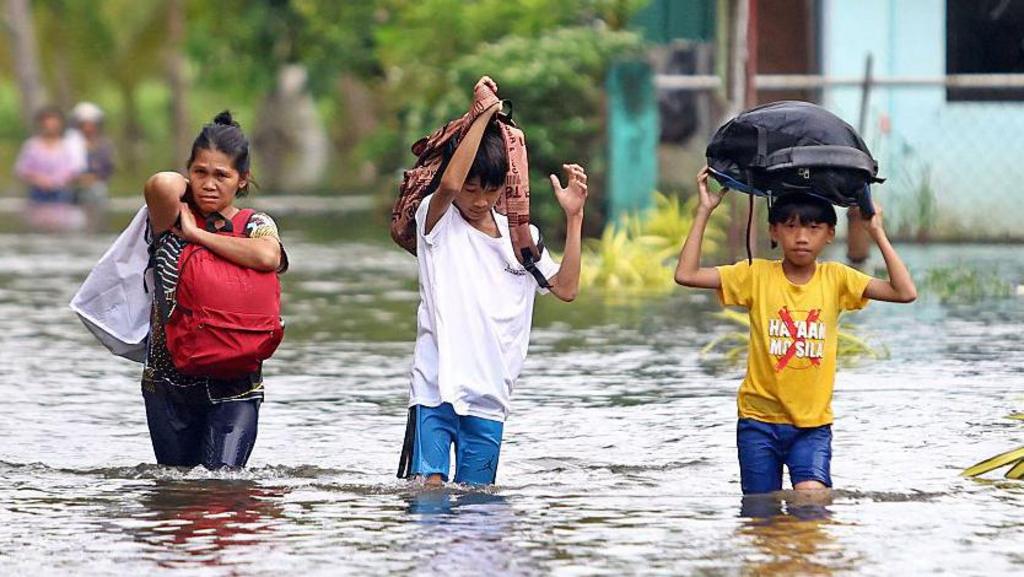“`html
The Philippines is preparing for the imminent arrival of another potentially devastating typhoon, less than a week after a previous storm claimed at least 200 lives and caused widespread destruction.
Typhoon Fung-wong, known locally as Uwan, is projected to intensify into a super typhoon, characterized by sustained winds of at least 185km/h (115mph), before making landfall on the island of Luzon as early as Sunday evening, local time.
Authorities indicate that Typhoon Fung-wong could surpass the strength of Typhoon Kalmaegi, which struck the country on Tuesday.
According to the Philippine meteorological service (Pagasa), the storm is expected to bring torrential rainfall and poses a significant risk of life-threatening storm surges.
Several educational institutions have either suspended in-person classes for Monday or transitioned to online learning. Philippine Airlines has also announced the cancellation of a number of domestic flights in anticipation of the storm’s arrival.
Typhoon Fung-wong is forecast to weaken rapidly upon landfall, but is expected to maintain typhoon status as it traverses Luzon.
Eastern regions of the Philippines have already begun to experience heavy rainfall and strong winds, a Pagasa official stated during a briefing on Saturday evening, local time.
While the impact is expected to be widespread across the country, there are particular concerns for areas that could experience a direct hit, including the island of Catanduanes, located off the coast of southern Luzon.
Residents in these areas, as well as other low-lying and coastal communities, have been urged to evacuate to higher ground in advance of the storm.
A civil defense spokesman stated that evacuations must be completed by Sunday morning at the latest and should not be attempted during periods of heavy rain and strong winds.
Typhoon Fung-wong has also prompted the suspension of rescue operations following the passage of Typhoon Kalmaegi, one of the most powerful typhoons of the year.
The heavy rainfall triggered mudslides that swept down hillsides and into residential areas, with some neighborhoods being devastated by the rapid flash floods.
The confirmed death toll in the Philippines from Typhoon Kalmaegi has risen to at least 204, with over 100 individuals still missing.
In Vietnam, five fatalities were reported, with strong winds uprooting trees, damaging roofs, and shattering windows.
The Philippine government has declared a state of calamity nationwide in the wake of Typhoon Kalmaegi and in preparation for the approaching storm.
This declaration grants government agencies greater authority to access emergency funds and expedite the procurement and distribution of essential supplies and services to those in need.
For many Filipinos, the devastation caused by Typhoon Kalmaegi earlier this week has heightened anxieties about the impending storm.
“We decided to evacuate because the recent typhoon brought floods in our area, and now I just want to keep my family safe,” Norlito Dugan told the AFP news agency.
He is among those who have sought refuge in a church in the city of Sorsogon, Luzon.
Another resident, Maxine Dugan, stated: “I’m here because the waves near my house are now huge. I live near the shore. The winds there are now very strong, and the waves are huge.”
The Philippines is particularly vulnerable to tropical cyclones due to its geographical location in the Pacific Ocean, where these weather systems originate.
Approximately 20 tropical cyclones form in this region each year, with about half directly impacting the country.
While climate change is not believed to increase the overall number of hurricanes, typhoons, and cyclones worldwide,
warmer ocean temperatures and a warmer atmosphere, both exacerbated by climate change, have the potential to intensify the storms that do form. This can lead to higher wind speeds, increased rainfall, and a greater risk of coastal flooding.
“`

